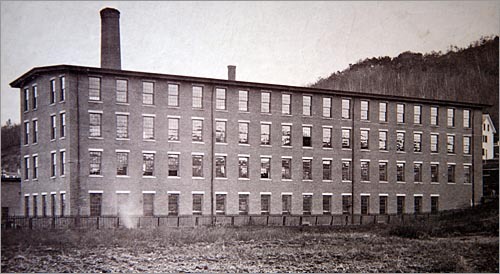(This post is part of a series about my research of Fitchburg architect H.M. Francis)
Albert C. Brown was another great example of a very community-active Fitchburg resident.
Brown was born in 1859 in Ashburnham, graduated from Fitchburg High School and had his eyes set on becoming a teacher after attending the Worcester Normal School. However, he had an opportunity to join the Worcester North Savings Institution as a junior clerk and worked his way up to the position of President in 1933, a position he held until his death in 1943.
Brown also served as treasurer of the YMCA in Fitchburg, and was a prominent member of the Fitchburg Board of Trade and Merchants Association.
 |
| Fig. 1: Albert C. Brown in a picture for the Fitchburg Merchants Association |
His obituary listed his wedding date as April 6th, 1893 to Anna B. See. He had one daughter, two sons and five grand-children.
 |
| Fig. 2: Albert C. Brown's obituary (03/26/1943) |
A memorial resolution was drafted by members of the Worcester North Savings Institution that listed some of his contributions to the bank. "...he gave devoted attention, bending every energy to its upbuilding and during the period of his service, it grew from an institution of 4396 depositors with deposits of $1,699,000 to one of 21,800 depositors and over $19,000,000 of deposits."
The memorial also includes the popular hymn, Only Remembered:
"Up and away, like the dew of the morning,
Soaring from earth to its home in the sun,
So let me steal away, gently and lovingly,
only remembered by what I have done.
Up and away, like the odors of sunset,
Sweetening the twilight as darkness comes on;
So let me pass away, peacefully and silently,
Only remembered by what I have done.
Need I be missed, if another succeed me,
Reaping those fields which in Spring I have sowed,
Who plowed or sowed is not missed by the harvester,
But he's remembered by what he has done."
 |
| Fig. 3: Memorial for Albert C. Brown |
The inventory entry for Albert C. Brown lists his residence on Mount Globe Street in Fitchburg, tucked behind Academy and Prichard Streets. The year on the inventory is 1909, one year after the death of Henry Francis. This house may have been one of the first designs when the firm was helmed by Frederick and Albert Francis.




































